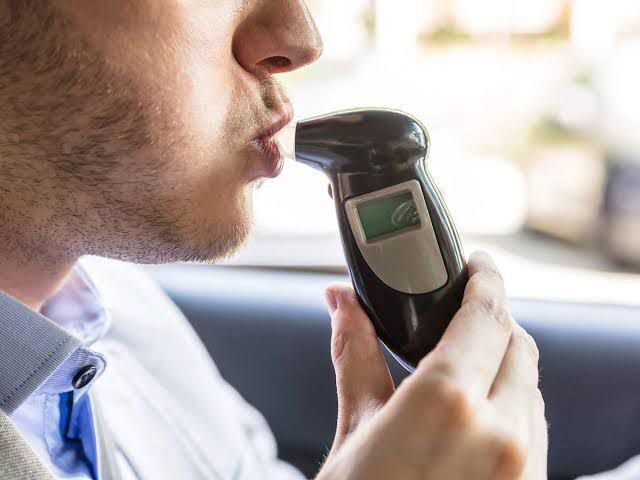Enhancing Directors and Officers Liability Protection in India: The Critical Role of Breath Analyser Tests

In the wake of evolving corporate governance standards in India, particularly with the introduction of the Bharatiya Nyaya Sanhita (BNS), the responsibilities of directors and officers have expanded significantly. Ensuring workplace safety has become a critical aspect of risk management and compliance. Implementing mandatory breath analyser tests at entry points is a key preventive measure that not only safeguards lives and prevents accidents but also protects corporate leadership from legal liabilities.
Table of Contents
Understanding the Bharatiya Nyaya Sanhita (BNS) and Its Implications:
The BNS has introduced new provisions that heighten the accountability of directors, officers, and occupiers for workplace safety. Key sections include:
- Section 299 (Culpable Homicide): Addresses deaths caused by negligence or recklessness. Failure to prevent an intoxicated worker from entering the premises could lead to severe penalties, including imprisonment, for company leaders.
- Section 337 (Causing Hurt by Endangering Life or Personal Safety): Covers injuries caused by negligence. If an employee’s intoxication results in injury, directors and officers may face legal action for not ensuring a safe environment.
- Section 304A (Causing Death by Negligence): Emphasizes the need for precautionary measures to prevent fatal accidents. Breath analyser tests are an effective method to show that reasonable steps were taken to prevent incidents.
The Case for Mandatory Breath Analyser Tests
- Accident Prevention and Life Protection: Breath analyser tests at entry points are crucial for identifying and preventing intoxicated individuals from entering the workplace. This measure is particularly important in industrial and factory settings where alcohol impairment can significantly increase the risk of accidents. Ensuring a sober workforce helps reduce the likelihood of accidents, injuries, and fatalities, thereby fostering a safer work environment.
- Legal Safeguard for Corporate Leadership: In the event of an accident, directors and officers face intense legal scrutiny. The BNS makes it clear that failing to ensure workplace safety can result in severe legal consequences. Implementing breath analyser tests demonstrates a company’s commitment to safety and can serve as a critical defense in legal proceedings, showing that all reasonable precautions were taken to prevent incidents.
Importance of Signboards in Safety Protocols
- Effective Communication and Deterrence: Clear signboards at entry points indicating the use of breath analyser tests are vital. They communicate the company’s commitment to maintaining a safe, alcohol-free workplace and act as a deterrent to those who might consider entering the premises under the influence.
- Legal Evidence of Compliance: In legal situations, these signboards serve as evidence of the company’s proactive approach to safety. A minor investment in quality signboards can prove invaluable in defending the company and its leadership against legal liabilities.
EHS and ESG Best Practices
- Integrating Breath Analyser Tests into EHS and ESG Frameworks: Implementing breath analyser tests is not only a legal requirement but also a best practice in Environmental, Health, and Safety (EHS) and Environmental, Social, and Governance (ESG) frameworks. From an EHS perspective, these tests contribute to a safer workplace by preventing alcohol-related incidents, thus enhancing overall employee well-being and operational safety.
- From an ESG standpoint, adopting such measures demonstrates a company’s commitment to social responsibility and ethical governance. It reflects a proactive approach to ensuring a safe working environment and adhering to best practices in corporate responsibility. By integrating breath analyser tests into their EHS and ESG strategies, companies can strengthen their reputation as responsible and forward-thinking organizations committed to the welfare of their employees and compliance with regulatory standards.
Balancing Compliance and Non-Compliance
- The Thin Line of Legal Responsibility: Under the BNS, the distinction between compliance and non-compliance can be subtle yet significant. Companies must establish safety protocols and ensure their consistent enforcement and documentation. Breath analyser tests, coupled with clear signboards, provide a verifiable method of demonstrating compliance.
- Mitigating Legal Risks: Neglecting such measures could be interpreted as negligence, exposing directors and officers to legal risks. Conversely, a well-documented safety protocol that includes breath analyser tests can serve as a strong defense, helping to protect the company’s leadership from personal liability.
Conclusion
Mandatory breath analyser tests at entry points not just serve as best practice but a necessity in the current legal environment shaped by the Bharatiya Nyaya Sanhita. Along with clear signboards, these tests enhance workplace safety, protect lives, and significantly reduce the legal liabilities of directors, officers, and occupiers. They also represent a commitment to EHS and ESG best practices, showcasing a company’s dedication to safety, social responsibility, and ethical governance. In an era where legal and ethical responsibilities are increasingly scrutinized, such measures are essential for safeguarding both the company and its leadership from potential legal challenges.
Contributed by – Sunayana Basu Mallik
King Stubb & Kasiva,
Advocates & Attorneys
New Delhi | Mumbai | Bangalore | Chennai | Hyderabad | Mangalore | Pune | Kochi
Tel: +91 11 41032969 | Email: info@ksandk.com
By entering the email address you agree to our Privacy Policy.